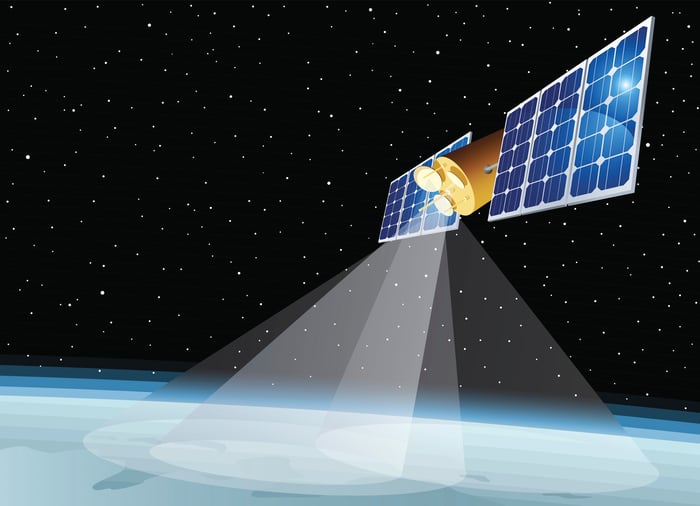Less than one year ago, SpaceX announced that its Starlink satellite communications network was available for military use. And nine months after Elon Musk began advertising a secured satellite network for government entities, the U.S. Space Force has awarded SpaceX its first Starshield contract, which could be worth anywhere from $15 million to $70 million over the course of a year.
The contract encompasses access to the Starlink network and provision of user terminals, ancillary equipment, network management, and other related services, according to the Space Force.

Image source: Getty Images.
Starlink evolves
Starlink is the SpaceX network of 4,800 internet satellites that sells broadband access around the globe for about $110 a month. Last month, SpaceX confirmed that Starlink had hit 2 million subscribers, a number that implies the service is already generating revenue on the order of $3 billion per year.
And now SpaceX will repurpose part of its civilian Starlink service for military use, thereby monetizing the experience it has developed from operating Starlink in Ukraine. The new service, called Starshield, first registered on the public's radar in December 2022 when a new tab appeared on the main SpaceX web page, one of eight at the top of the page describing the company's services.
These include Starlink itself, the Falcon 9 and Falcon Heavy rocket programs, a Starship spaceship still in development, Dragon spaceships for carrying cargo to orbit, a spaceflight program for transporting astronauts to the International Space Station and the moon, and a ride-share program placing small satellites alongside primary payloads on Starlink launches.
Clicking on the Starshield tab, space fans will discover what SpaceX has in mind for this newest service. To wit, building on the company's experience operating Starlink throughout the war in Ukraine, fending off cyberattacks, and keeping Starlink operational despite Russian jamming attempts. SpaceX has developed proficiency in maintaining and operating a communications network in the middle of a shooting war -- a proficiency that, it reasoned, the U.S. military might find helpful.
The future of Starshield
SpaceX was right about that -- as much as $70 million right. And this could be just the beginning for SpaceX's Starshield project. The company advertises the project's secure communications, but Starshield also aims to offer the military earth observation and hosted payload services.
SpaceX is already building a limited number of earth observation satellites (specifically for missile tracking) for the U.S. Space Development Agency, an arm of the Space Force. Technically, this isn't part of the Starshield project yet.
But as the military begins operating these tracking satellites, and starts allocating further dollars to Starshield for communications services, it's logical to assume that SpaceX's earth observation activities will eventually be folded into the Starshield project.
It's also logical to assume, if all goes well with both these preliminary exercises, that the military will begin ordering additional earth observation satellites from SpaceX, and perhaps some of these hosted payload services as well.
What it means for investors
There are two primary conclusions for investors from all of the above. First and foremost: SpaceX is getting bigger, evolving and branching out into new areas of space work. This poses a challenge to incumbents that are already doing this kind of work -- Maxar and Planet Labs in the field of earth observation, for example.
But it also means that SpaceX is developing new revenue streams for itself through Starshield and Starlink.
This is important to investors, even though SpaceX is still a private company, because for the last couple of years, Elon Musk has repeatedly stated his intention to offer an initial public offering (IPO) for Starlink once its revenue is growing predictably enough to attract investors. With $3 billion in civilian revenue annually already, and now tens of millions of dollars beginning to pour in from the military (and more on the way), it appears that Starlink is approaching that point. Thanks to Starshield, Starlink now looks like a bona fide IPO prospect.




